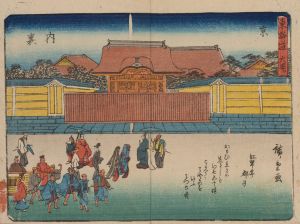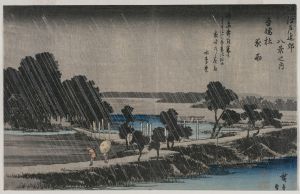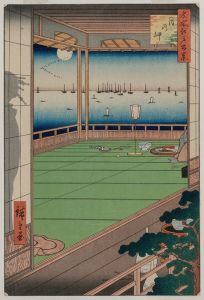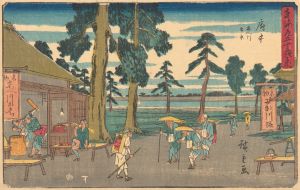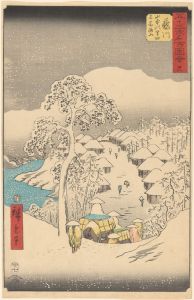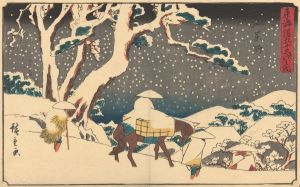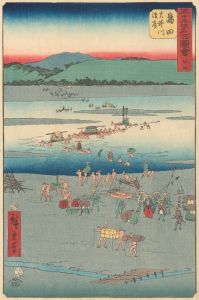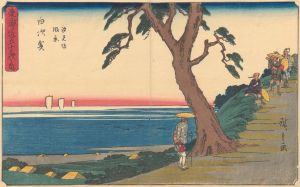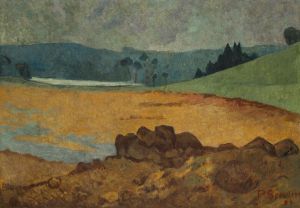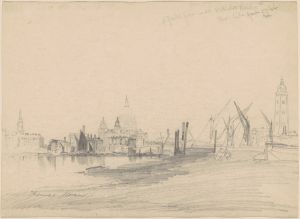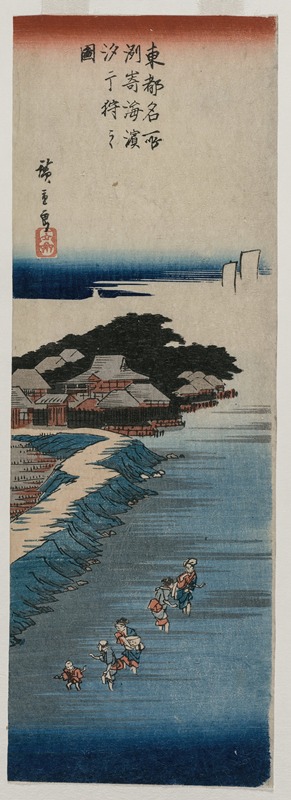
Gathering Shells at Low Tide at Susaki; from the series 100 Views of Famous Places in Edo
A hand-painted replica of Andō Hiroshige’s masterpiece Gathering Shells at Low Tide at Susaki; from the series 100 Views of Famous Places in Edo, meticulously crafted by professional artists to capture the true essence of the original. Each piece is created with museum-quality canvas and rare mineral pigments, carefully painted by experienced artists with delicate brushstrokes and rich, layered colors to perfectly recreate the texture of the original artwork. Unlike machine-printed reproductions, this hand-painted version brings the painting to life, infused with the artist’s emotions and skill in every stroke. Whether for personal collection or home decoration, it instantly elevates the artistic atmosphere of any space.
"Gathering Shells at Low Tide at Susaki" is a woodblock print by the renowned Japanese ukiyo-e artist Andō Hiroshige. This artwork is part of Hiroshige's celebrated series "100 Views of Famous Places in Edo" (Meisho Edo Hyakkei), which was published between 1856 and 1858. The series is known for its detailed and vibrant depictions of various locations in Edo, now modern-day Tokyo, capturing the essence of the city during the late Edo period.
Hiroshige, born in 1797, was a master of the ukiyo-e genre, which flourished in Japan from the 17th to the 19th centuries. Ukiyo-e, meaning "pictures of the floating world," typically depicted landscapes, tales from history, the theater, and scenes of urban life. Hiroshige's work is particularly noted for its innovative compositions and use of color, which influenced many Western artists, including the Impressionists.
"Gathering Shells at Low Tide at Susaki" illustrates a serene scene at Susaki, a coastal area in Edo. The print captures the activity of shell gathering, a common practice during low tide when the sea recedes to reveal a variety of shells. This activity was not only a means of sustenance but also a leisurely pastime for the people of Edo. The composition of the print is carefully balanced, with figures engaged in shell gathering in the foreground and the vast expanse of the sea and sky in the background. Hiroshige's use of perspective and his ability to convey the vastness of the natural world are evident in this work.
The "100 Views of Famous Places in Edo" series is significant for its documentation of Edo's landscapes and urban scenes during a time of great cultural and social change. Each print in the series offers a glimpse into the daily life and environment of the city, reflecting both the beauty and the transience of the world Hiroshige inhabited. The series was produced using the traditional Japanese woodblock printing technique, which involves carving an image into a wooden block, applying ink, and pressing it onto paper. This method allows for the production of multiple copies of the same image, making art more accessible to the public.
Hiroshige's work, including "Gathering Shells at Low Tide at Susaki," played a crucial role in the development of landscape art in Japan. His ability to capture the subtleties of light, weather, and season in his prints has been widely admired. The influence of his work extended beyond Japan, impacting Western art movements and artists who were inspired by his unique approach to composition and color.
Today, Hiroshige's prints are highly valued by collectors and are displayed in museums around the world. They continue to be celebrated for their artistic beauty and historical significance, offering insight into the cultural and natural landscape of Edo-period Japan.





